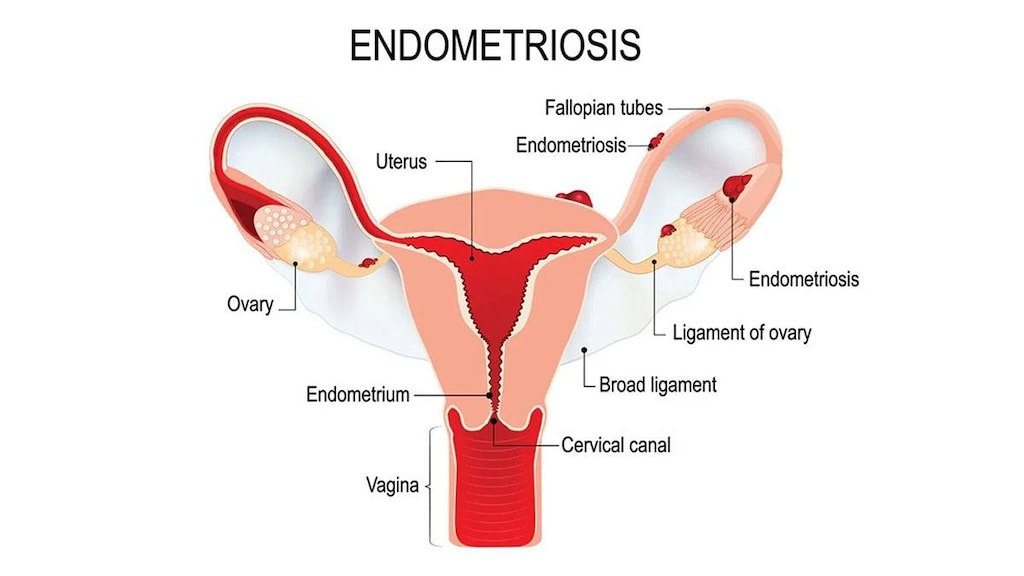
What is endometriosis?
Endometriosis is a condition where tissue similar to the lining of the uterus is found outside of the uterine cavity (such as on the ovaries, fallopian tubes, or other pelvic structures). This tissue responds to the hormones that trigger the menstrual cycle so thickens and sheds like the cells found in the uterus.
What are the symptoms of endometriosis?
Common symptoms of endometriosis include:
- Severe pain during menstruation
- Heavy bleeding (having to change a pad or tampon every one to two hours)
- Bloating
- Diarrhea
- Constipation
- Bladder issues
- Pain associated with sexual intercourse
- Infertility.
Pain may also occur at other times of the month or around the time of ovulation.
The exact prevalence of endometriosis is difficult to determine because many women do not realize they have the condition. There is often a time lag of several years between the onset of symptoms and diagnosis (average time eight or more years). It tends to run in families and most women will have a female relative with endometriosis, although they may not realize this because of a reluctance by some women to disclose menstruation-related problems.
How is endometriosis diagnosed?
If you suspect you may have endometriosis make an appointment with a doctor with good clinical knowledge of the condition.
Your doctor will perform a physical examination and ask about your symptoms and your menstrual cycle.
Before making a diagnosis of endometriosis it is important to rule out other conditions such as:
- Adenomyosis
- Fibroids (leiomyomas)
- Interstitial cystitis
- Irritable bowel syndrome
- Ovarian cysts
- Pelvic inflammatory disease.
A transvaginal ultrasound (TVUS) may be performed; however, to definitively diagnose endometriosis, a laparoscopy must be performed. This is a thin scope that is inserted through a small incision in the abdominal wall (often around the belly button area) to view the pelvic area. It allows the surgeon to see misplaced endometrial tissue and allows staging of the disease (location, extent, depth of tissue growths). Abnormal tissue may be removed for biopsy during the procedure.
Other procedures for diagnosis may include computed tomography (CT) scan or Magnetic Resonance Imaging (MRI).
How is endometriosis treated?
Treatment for endometriosis depends on the severity but may include:
- Hormonal contraceptives (cyclic or continuous oral birth control pills; hormone patches or vaginal rings)
- NSAIDs like ibuprofen or naproxen for pain, which can be used with contraceptives for more moderate pain
- Gonadotropin-releasing hormone (Gn-RH) analogs
- Progestins, like medroxyprogesterone or norethindrone.




